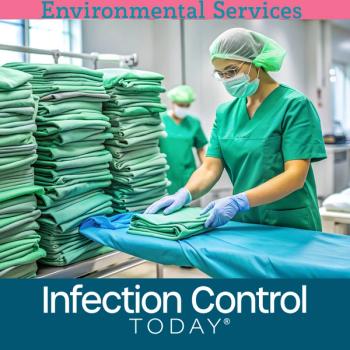
Investigators Predict, Confirm How E. coli Bacteria Hijack Cells' Directional Mechanism
Working in the emerging field of systems biology, UT Southwestern Medical Center researchers mathematically predicted how bacteria that cause food poisoning hijack a cell's sense of direction and then confirmed those predictions in living cells.
From left: Dr. Neal Alto, assistant professor of microbiology and senior author of the study, and Robert Orchard, graduate student of microbiology and the study's lead author.
Working in the emerging field of systems biology, UT Southwestern Medical Center researchers mathematically predicted how bacteria that cause food poisoning hijack a cell's sense of direction and then confirmed those predictions in living cells.
The study proposed a new model to explain how mammalian cells establish the sense of direction necessary to move, as well as the mechanism that a disease-causing form of E. coli bacteria employ to hijack that ability. Cells need to orient themselves for several basic processes, such as keeping biochemical reactions separated in space and, in the case of immune cells, pursuing pathogens. Importantly, disruption of the cell's sense of direction often leads to human disease.
"This is a great example of scientists from different fields of research coming together to solve a complex and important biological problem," says Dr. Neal Alto, assistant professor of microbiology and senior author of the study, published Feb. 17 in Cell.
Systems biology aims to discover and understand a "circuit theory" for biology a set of powerful and predictive principles that will reveal how networks of biological components are wired to display the complex properties of living things. The rapidly emerging field requires experts in several scientific disciplines including biology, physics, mathematics and computer science to come together to create models of biological systems that consider both the individual parts and how these parts react to each other and to changes in their environment.
Scientists from UT Southwestern's microbiology department and the newly expanded Cecil H. and Ida Green Comprehensive Center for Molecular, Computational and Systems Biology teamed up to examine the problem collaboratively. They initially conceived a mathematical model for their hypothesis of how the cell would respond during an E. coli-induced infection and then tested their computational predictions in living cells.
"Bacteria inject protein molecules into human cells with a needle-and-syringe action," Alto says. "The human cell responds by producing a local actin-rich membrane protrusion at the spot where the bacteria attaches to the cell."
For healthy cells to move normally, these actin polymers push against a cell's membrane, protruding and propelling the cell in one direction or another. When E. coli molecules are injected, however, actin polymers rush to the site infection and help bacterial molecules both move within the cell and establish an internal site of infection.
Robert Orchard, graduate student of microbiology and the study's lead author, notes, "By asking 'How does a bacterial pathogen from outside the cell regulate the host cells' actin dynamics within the cell?' we have uncovered a fundamentally new molecular circuit involved in mammalian cell polarity and bacterial infection. These findings provide new insight into the regulatory mechanisms that control both disease-causing agents and normal mammalian cell behavior."
Other UT Southwestern researchers from the Green Center involved in the work were Dr. Steven Altschuler and Dr. Lani Wu, both associate professors of pharmacology; Dr. Gürol Süel, assistant professor of pharmacology; and Mark Kittisopikul, a student in the Medical Scientist Training Program.
The National Institutes of Health, the James S. McDonnell Foundation and The Welch Foundation supported the study. The researchers also received assistance from the UT Southwestern Live Cell Imaging Facility, which is supported in part by the National Cancer Institute.
Â
Newsletter
Stay prepared and protected with Infection Control Today's newsletter, delivering essential updates, best practices, and expert insights for infection preventionists.





